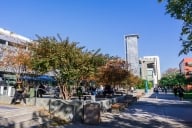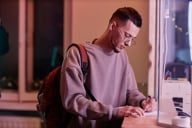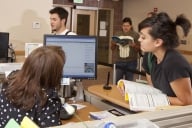You have /5 articles left.
Sign up for a free account or log in.
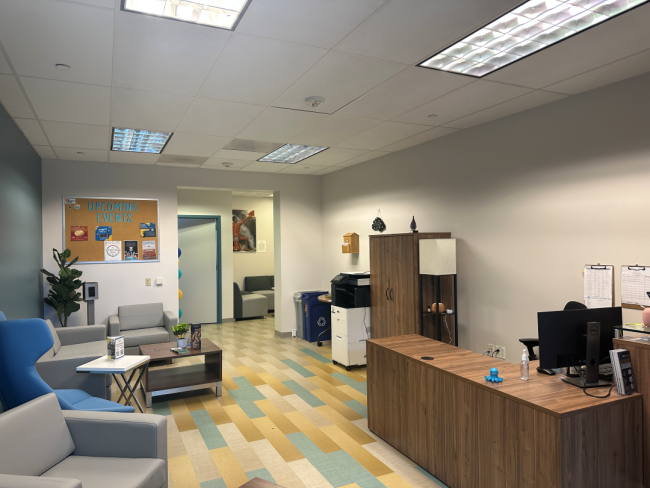
The Triton Transfer Hub offers transfer students at UCSD a space to relax, study or grab a snack during the day.
University of California, San Diego
Transfer students make up a quarter of four-year institutions’ student populations, but they often feel invisible among the general student body.
The University of California, San Diego, reopened its Triton Transfer Hub in a larger space this spring, providing a one-stop location for transfer students to relax, receive guidance from staff or engage with fellow transfers.
Fish in a new sea: Transfer students make up about a third of the incoming class each year at UCSD, or about 7,700 in total, says Jackie Duerr, program manager for transfer student success.
Each transfer student has to navigate a new campus environment, whether that is an in-person class setting after learning online or moving to a new city and campus. Most come in at the junior level, which presents unique obstacles in juggling professional development work with college experience.
“When we’re juniors on campus, we’re thinking about, ‘How do I grow my résumé? How do I get faculty mentorship, how do I do undergraduate research, internships?’” Duerr explains. “You’re not necessarily thinking about ‘How do I do school?’ You’re also thinking about, ‘How do I do me?’”
Duerr and her team opened the Triton Transfer Hub in January 2020 based on student input to cultivate a sense of belonging among transfer students on campus.
“The reason why a space like ours is so important is because of that need for customizability that you can’t necessarily get in other cultural centers,” Duerr says. “We try and make our space [about] ‘What do you need, how can you create your goals and how can we meet you where you’re at?’ Keeping in mind you are probably thinking about that, plus, ‘How do I find my classes? How do I park on campus?’”
Building the hub: The original transfer hub was around 500 square feet, but in its new space, the hub is made up of four offices, a conference room and a lounge.
Inside Pepper Canyon Hall, the hub is located near a trolley stop, making it convenient for commuters, the Student Services Center and the Price Center, where other student services like the dining hall are available.
Inside the hub, students can use free printing, a microwave and a fridge, plus get snacks and coffee as well as reserve quiet or group study spaces, meet with a peer coach, or talk with the transfer learning strategist, a student worker who offers academic success help. Each transfer student is assigned a peer mentor upon admission, offering mentorship and guidance on the transfer experience from the student perspective.
The hub also serves as a transfer student event space for social, academic, professional or personal development activities.
Most often, students stop by the hub to print or snack and study, Duerr says. “Having a physical space has truly made an area where transfer students can congregate and they’re using it.”
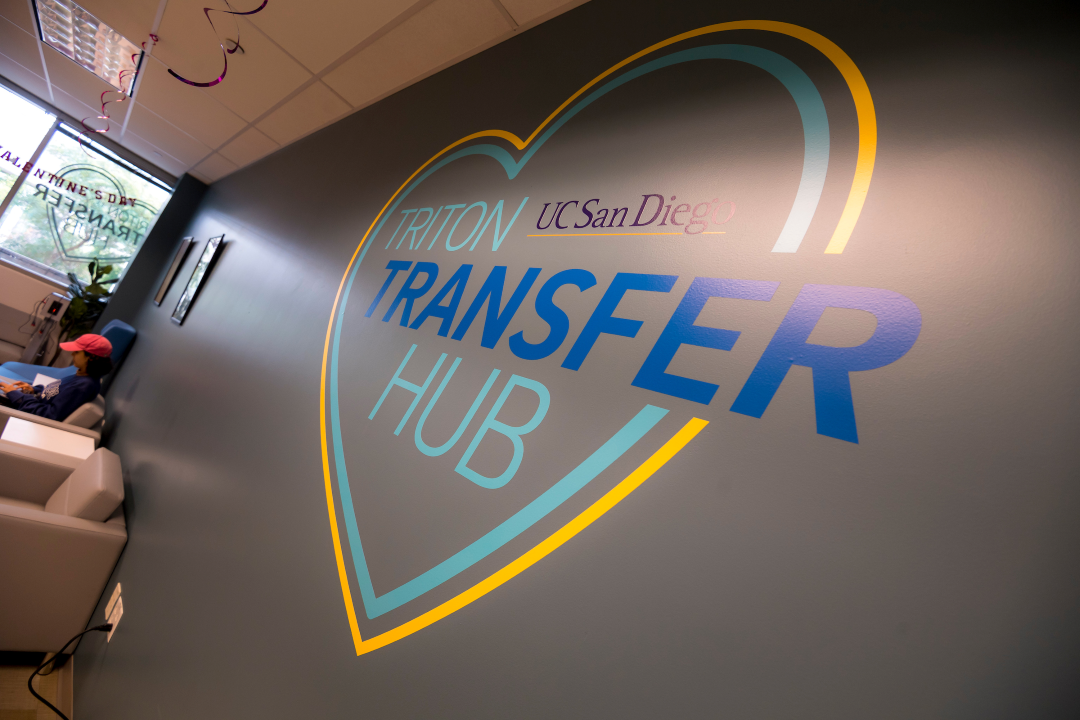
University of California San Diego
An innovative feature of the hub is the Storytellers Gallery, which is an art gallery created and curated by transfer students. The gallery is available in person or online and rotates annually following a competition judged by campus members from across the institution.
“It’s an opportunity for students to, through this gallery, share stories of identity and resilience with the campus community, so we’re able to educate the campus on what are the experiences of transfer students, and we do it through art,” Duerr says.
Those visiting the virtual gallery can fill out a form about how the gallery grew their knowledge about diverse transfer student experiences and identities.
The impact: Since opening the new hub this spring, the office has seen an uptick in meetings with its staff and student workers. Overall engagement grew 153 percent compared to last year, and peer coaching and staff appointments grew to almost 1,000 over the semester.
The hub will move again in 2026 to the under-development Triton Center’s Student Success Building with the Teaching and Learning Commons, centralizing student success resources. In the new facility, the hub will grow to almost 10,000 square feet and reside in the center of campus.
If your student success program has a unique feature or twist, we’d like to know about it. Click here to submit.


